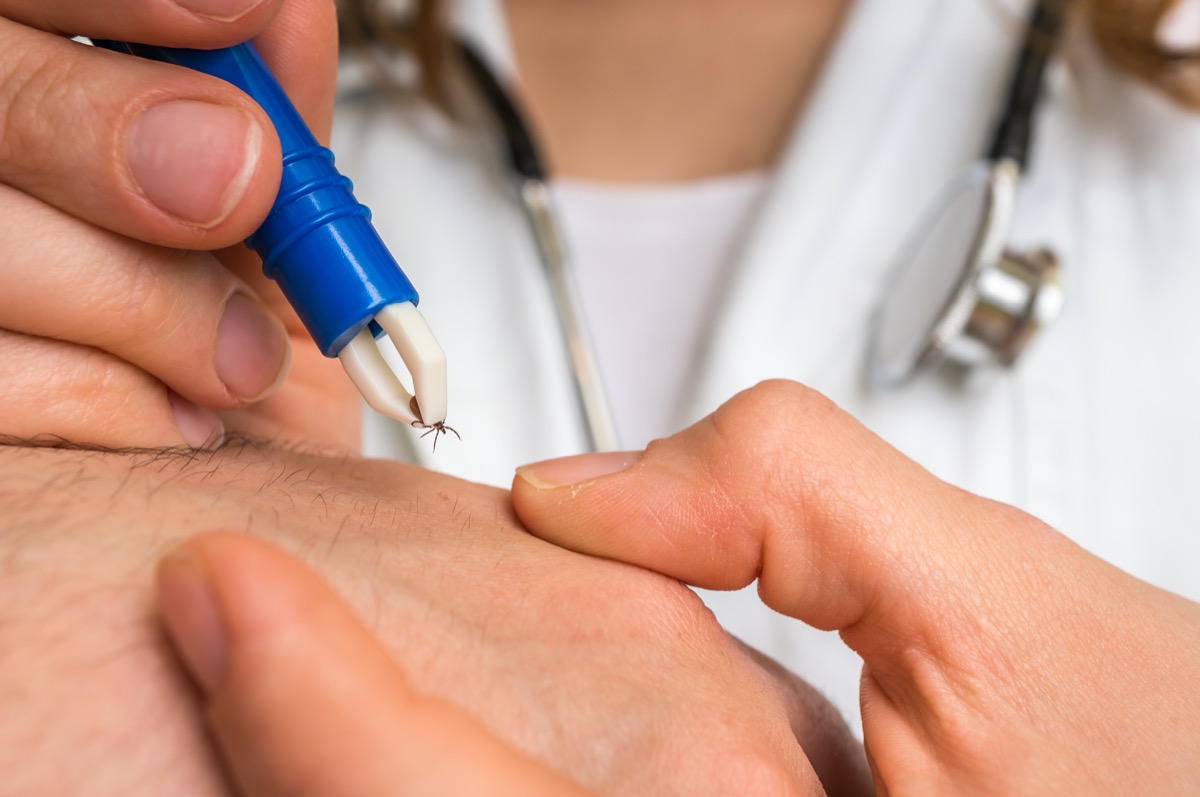While there may be some significant overlap between Lyme disease and coronavirus symptoms, there are many symptoms unique to Lyme disease that patients should be aware of before heading to the hospital. “The classic bulls-eye rash, which occurs in 70 to 80 percent of cases; joint pains, and swollen glands are more typical in early-onset Lyme disease,” explains physician Leann Poston, MD, a medical expert with Invigor Medical.ae0fcc31ae342fd3a1346ebb1f342fcb Approximately 30,000 new cases of Lyme disease are reported to the Centers for Disease Control and Prevention (CDC) annually. However, data from two CDC-sponsored studies reveals that the infection rate might actually be much higher—10 times higher, in fact. The research indicates that up to 300,000 people are likely infected with Lyme disease in the U.S. each year. While Lyme disease cases begin to rise in the springtime, CDC data compiled between 2008 and 2018 reveals that summertime—when more people are spending time outdoors—tends to see a sharp increase, with new cases typically spiking in July. Unfortunately, ticks may be an even more pressing problem this year than ever before. In many states around the country, from Massachusetts to Michigan, lawn care services including tick spraying were initially deemed non-essential during coronavirus lockdowns, potentially increasing the number of ticks that could infect people with Lyme disease. “Over the past several months, we have seen an increase in the number of emergency department visits related to tick bites,” Pennsylvania Secretary of Health Rachel Levine, MD, said in a statement. It you believe you’ve been bitten by a tick and want to avoid potential exposure to coronavirus patients, Poston recommends calling your general practitioner (GP) before high-tailing it to the ER. “If [you have] a rash and no respiratory symptoms, the GP would be fine,” she explains. However, that doesn’t mean you should take a wait-and-see approach if you think you may have either coronavirus or Lyme disease. “Seek care from a health care provider so an accurate diagnosis and treatment can be implemented as soon as possible,” she says. RELATED: For more up-to-date information, sign up for our daily newsletter. Fortunately, if Lyme disease is caught in its early stages, it can be effectively treated with antibiotics—and if it is coronavirus, identifying it early and implementing quarantine procedures may help reduce your risk of spreading it to others. And if you’re planning on spending time outdoors, there are some easy ways to reduce your risk of a tick bite; the CDC recommends treating your clothing with a 0.5 percent permethrin solution, avoiding areas with high grass, examining yourself and your pets for ticks, and showering after returning indoors. And if you want to know how COVID-19 may change your warm weather plans, check out these 7 Things You Won’t Be Able to Do This Summer Thanks to Coronavirus.
